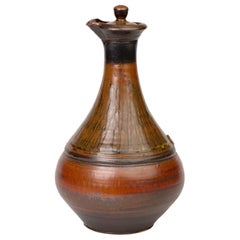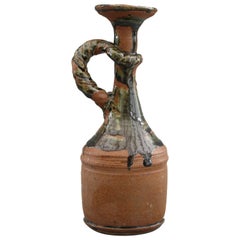Elsa Benattar
Late 20th Century English Modern Pottery
Stoneware
Recent Sales
Vintage 1980s English Modern Pottery
Pottery
A Close Look at Modern Furniture
The late 19th and early 20th centuries saw sweeping social change and major scientific advances — both of which contributed to a new aesthetic: modernism. Rejecting the rigidity of Victorian artistic conventions, modernists sought a new means of expression. References to the natural world and ornate classical embellishments gave way to the sleek simplicity of the Machine Age. Architect Philip Johnson characterized the hallmarks of modernism as “machine-like simplicity, smoothness or surface [and] avoidance of ornament.”
Early practitioners of modernist design include the De Stijl (“The Style”) group, founded in the Netherlands in 1917, and the Bauhaus School, founded two years later in Germany.
Followers of both groups produced sleek, spare designs — many of which became icons of daily life in the 20th century. The modernists rejected both natural and historical references and relied primarily on industrial materials such as metal, glass, plywood, and, later, plastics. While Bauhaus principals Marcel Breuer and Ludwig Mies van der Rohe created furniture from mass-produced, chrome-plated steel, American visionaries like Charles and Ray Eames worked in materials as novel as molded plywood and fiberglass. Today, Breuer’s Wassily chair, Mies van der Rohe’s Barcelona chair — crafted with his romantic partner, designer Lilly Reich — and the Eames lounge chair are emblems of progressive design and vintage originals are prized cornerstones of collections.
It’s difficult to overstate the influence that modernism continues to wield over designers and architects — and equally difficult to overstate how revolutionary it was when it first appeared a century ago. But because modernist furniture designs are so simple, they can blend in seamlessly with just about any type of décor. Don’t overlook them.
Finding the Right Pottery for You
Even if you’re (understandably) boastful of your minimalist loft apartment or breezy California coastal-style decor, your space could probably still use some streamlined antique and vintage pottery, which can prove both timeless and on-trend.
Pottery, which sees clay and other ceramic materials fired at high temperatures in order to lend them a durable and robust form, can introduce color and character to your dining room or living room. Pottery includes stoneware, porcelain and earthenware and, depending upon a piece’s origins, can vary considerably in style, form and function from one vessel to another. This makes it easy to find pottery for your interiors or outdoor garden areas, regardless of color scheme or design style.
“Ceramics are definitely seeing a resurgence in the decorating and art worlds,” says the team of Mat Sanders and Brandon Quattrone of interior design firm Consort. The personalization of handmade craftsmanship has served as a sort of anti-Internet to screen-weary decorators.
The rustic appearance of some mid-century-era Mexican pottery, such as a jug or water pitcher, can add earthy charm to your breakfast table while hand-painted antique Japanese pottery, such as a planter for your patio, might be characterized by rich colors and exquisitely detailed landscape scenes.
On 1stDibs, find a wide range of antique, new and vintage pottery with origins in countries all over the world. Our collection includes vases, vessels and other tableware from France, Italy and China as well as contemporary pottery and pieces that date from the 18th century and earlier.

